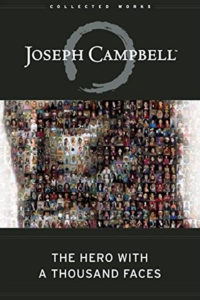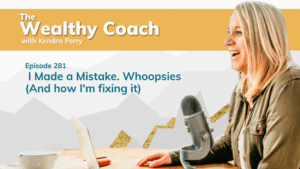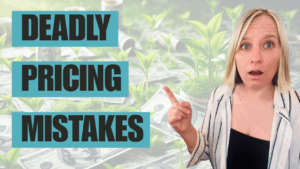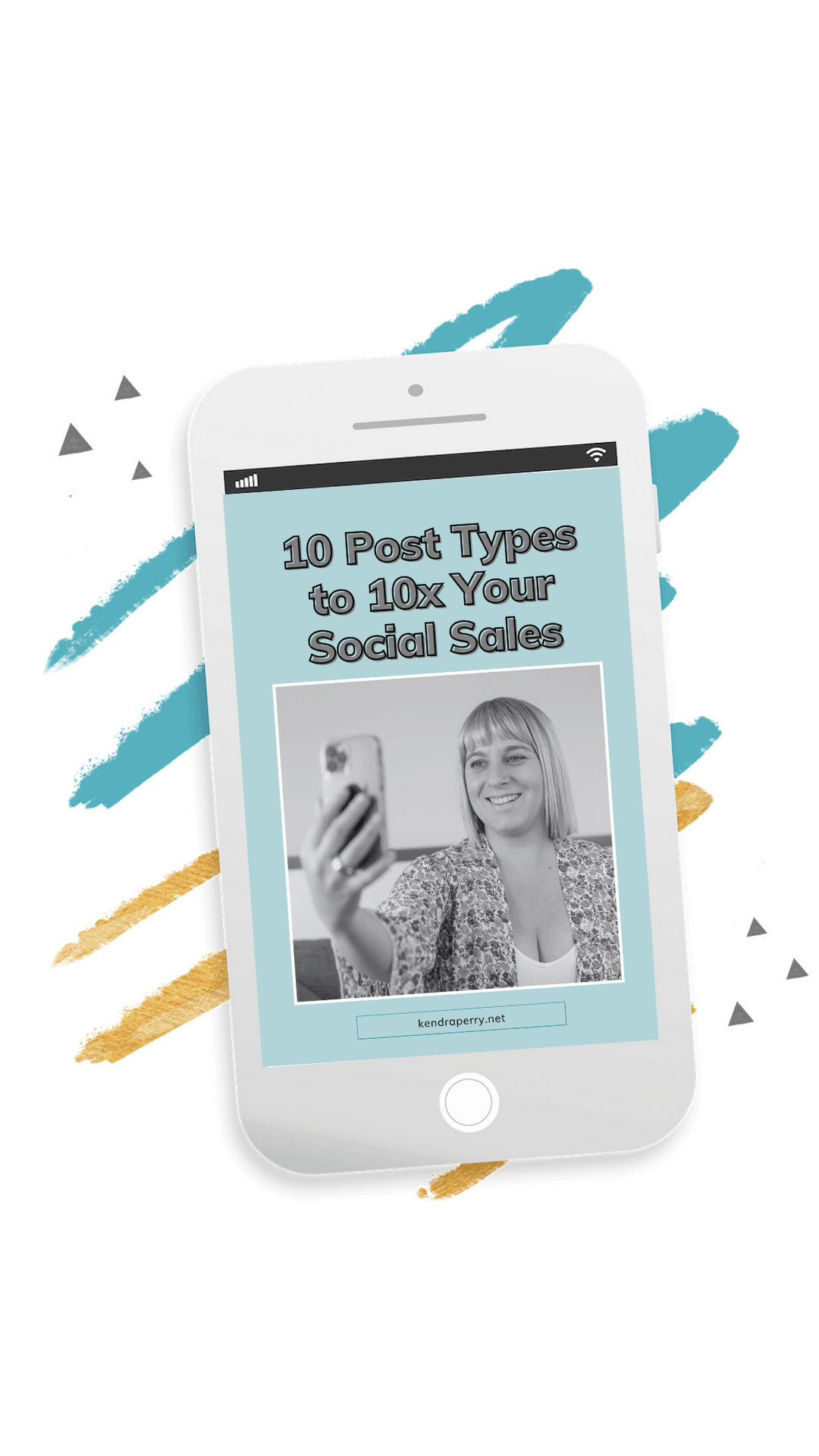Storytelling has always been an effective way to get someone to listen. In business, storytelling is a compelling strategy in creating content and connecting with your audience. That’s what we’re going to talk about for today’s episode! Our guest shares how storytelling not only makes it easier to attract clients, but also gives your content more life! Michelle Kuei is a motivational speaker, author, visibility coach, certified storytelling master, content marketing strategist, and email marketer. Tune in now and learn how to use the power of storytelling to get business seen, heard, and wanted by clients!
Michelle’s Attract Clients Through Storytelling Quiz: http://quiz.attractclientsthroughstorytelling.com
Connect with Michelle on Social: http://www.facebook.com/coachmichellekuei
Website: http://elevatelifecoaching.org
—
Listen to the podcast here
Tell More Stories To Get More Clients With Michelle Kuei
As always, I have a great episode for you if I don’t say so myself. I’ve been obsessed with storytelling and I’ve been trying to tell more stories on the show, in my emails and my content so I thought, “Why don’t we talk to an actual storytelling expert?” We are chatting with Michelle Kuei. She is an international speaker, certified visibility coach, content marketing strategist and author.
As the Founder of Elevate LifeCoaching, Michelle mentors women to use the power of storytelling as their secret sauce in attracting clients and turning their passion for coaching into a profitable business. Clients who work closely with her start their coaching business confidently and courageously through Attract Clients Through Storytelling online course. They get clarity to the message and implement marketing strategies that are profitable and authentic. Let’s get into storytelling and go hang out with Michelle.
—
Michelle, welcome to the show.
I’m so excited to be here.
I love following you on Facebook and I find the way you interact on Facebook, the stories and the content you post, I’m always so interested in it. I’m excited to talk to you. We’re going to be talking about storytelling. This is a hot topic but in terms of content and connecting with your audience, we think it makes it easier and it also gives your content more life. You have an interesting story. I would love for you to share it with our audience.
I started as a life and mindset coach like many of the coaches might be reading. That was an inspiration for a lifelong journey. When I was eleven, I had a big car accident that led to permanent damage to my leg. I walk with crutches. I’m only 4 feet, 4 inches tall so growing up had always been quite a challenge for me. I described myself as a negative self-talker. Throughout my journey, I kept talking pretty poorly to myself.
When I finally realized that that was part of the mindset work that we all had to go through and the shadow of things that we all had to overcome, it came to a point where I was seeing my 40s, waking up one day and I’m like, “This is not the life I want to live for the rest of the lifetime.” I decided to book a trip to do something pretty outrageous to many people because a lot of people still keep their bucket list and might be on their bucket list.
I took this trip to hike the Inca Trail to Machu Picchu. It’s 26 miles. The way that I did it was I have to walk on crutches. For the whole time, I’m pushing down on my two crutches to go on that trip. It was a lot of body endurance exercise for me during the four days of the trip. When I came back, it was a total game-changer. What used to be a fitness journey turned into this inspiring, love and lot of twist-and-turn journey of entrepreneurship.
I can’t believe you did that. I’ve done that trip. I can’t remember if it was an assault gun or something like that. It’s another similar long trip to Machu Picchu. I know how treacherous it would’ve been. That’s an amazing thing to accomplish.
I did the research but it wasn’t to the extent where when I started to live it and be part of it, I realized that there are so many obstacles I didn’t even think about. On that trip, I kept thinking, “Am I going to make it? Am I going to get to the finish line? Am I going to the top? What if I get sent back?” A lot is going on in my mind.
How did you deal with the elevation? I’m curious.
Not well. I had high altitude syndrome. Not to the point where I needed oxygen but the whole trip I was having a lot of stomach issues. Two days before I went on the hike, I checked myself into their clinic because I was having a lot of issues and viruses. I was in the hospital laying. I’m looking at the ceiling thinking, “This is not the way to end my trip.” It would be too embarrassing to go back home and tell people, “I didn’t finish that trip because I got stomach flu.”
I remember insisting and telling the doctor, “You need to let me go. The whole reason why I came this far is I want to do that hike and there’s no way I’m going back. You’re going to sign that discharge paper, give me some medication and send me out. I’ll be perfectly fine.” She had to sign the paper the following day and send me out. She was like, “At any point if you need me, you need to come back here. I’m like, “I’ll take that into consideration.”
I can relate to this because, after my Machu Picchu trek, I got a crazy parasite. I don’t think I’ve ever been so sick after the trek. I had no idea that you could have a gastrointestinal thing like that. It was wild. Congratulations on completing that. That’s an amazing goal. I’m curious, what were you telling yourself as you did that trip to keep going? I’m sure there were a lot of times along the way when you felt like giving up.
It happened on day one. I remember it took me ten hours to get to the campsite. After dinner, we were all sitting around and chatting. I remember sitting there with the tour leader who was taking us on the trip saying, “Michelle, you’ve been the slowest one on day one. You do realize that day two is going to be a lot longer and harder. Are you sure you want to do this? If you change your mind, it’s day one so I can still have someone escort you back to where you came from.”
At that moment, I was asked to make that decision. Do I want to go back or do I want to keep going? I look at all the pros and cons. Going back means that I have to explain to people why I didn’t finish and continue to live that small self but moving forward, I may not make it back but was it worth it? In my mind, yes. It’s going to be worth it. I came this far. There’s no way I’m going back so I’m going to do this no matter what. If I die, that’s okay. At least I die very gloriously. I’m bearing the embarrassment of explaining to people.
Out of that, to prove to everybody and including myself, that despite my disability, I am capable of doing things so I say yes. From that moment on, it’s like the universe heard you say a big yes to things so it’s not afraid to throw you more obstacles. If you say yes to something, be careful because the universe thinks that you’re strong enough to get more yeses and it will continue to throw these challenges. There’s a phrase that goes, “When life throws you a lemon, make lemonade.” In my world, when life throws you a lemon, you ask for vodka. That’s what life is about. It’s not going to be once you cross over to the other side, that’s the paradise or the end of the world.
You get more mountains that you have to overcome, reach and keep going further. That was my entrepreneurship. When I came back, I thought, “In what way can I contribute more to the world? In what way can I feel bigger?” Now that I know, on this trip, I could be someone else’s inspiration as people were passing me by. Every person that passed me by on that trail turned around and gave me a thumbs up but in reality, they are also my inspiration because every time I see them, I saw the meaning of the possibility of me changing someone else’s life.
I could be an inspiration for someone but only if I say yes to the scary stuff. Yes, I can put myself out there and yes, I can do the things I want to do. There’s that moment of awakening when I realize that when we have our mind set to do something, our superpowers supercharge us and we become this magnet where people are irresistibly wanted to come into your space but only if you say yes to the scary stuff.
That is such a powerful lesson. Your story is so inspiring. We’re going to be talking about stories. You have this amazing story of overcoming and doing this big thing but I know there’s going to be people in our audience who are going to think, “My life is pretty boring. How am I supposed to utilize or share my story? I don’t have a beautiful, inspiring story like Michelle.”

First of all, whoever is thinking that, I want you to stop and reframe yourself. The reason why you became a coach is something must have happened in your life. You didn’t just wake up one day and say, “I’m not going to be a bookkeeper. I’m going to be a coach.” What was that moment for you to decide that you wake up in the morning and you want to coach and help? What was that moment like for you?
I bet 100% that there’s that reason why you decided to coach and help others. We don’t just wake up and want to help everybody. We wake up because ourselves had experienced something that is so significant enough to us and inspires us to lead on that transformational journey. One of my favorite storytelling models came from Joseph Campbell.
He has a book called The Hero with a Thousand Faces. In the book, he talked about if we look at all these historical pathogens from ancient histories, what we see is very uncommon. Everything has a story to it, all the carvings on the ancient walls and all the Mayans have their words written out. It’s all very in the sense of telling a story through the picture, words, songs and music that we hear. Everything has a story behind it.
That journey of how one person wakes up and decided to carve everything on the wall occurs typically because there’s a calling. He called it calling and we called it something that’s a spiritual awakening or it could be an idea or an inspiration that came into your mind like, “I wonder what it would be like if I can do something different.” That is a calling for a hero.
What we hear is a hero’s journey. The hero is you going onto a path, answering a calling and on that journey, you realize there are obstacles and challenges but somehow you figure out and overcame them. Perhaps there’s some mentor or guy who came along to help, guide and points you in the direction that you need to go. You went on the journey of transformation and finally return home. What do you do when you return home? You want to help everybody and help more. The hero’s journey is a full cycle. Just because you return home doesn’t mean that it’s the end of your story. It’s another beginning so it’s a full circle. Our journey begins again and again.

To clarify, this hero’s journey is what you gave us at the beginning. That was your hero’s journey, correct?
Yes.
The hero’s journey is the story of how you were in one place. Maybe you didn’t want to be there and you thought something was wrong. There was something about that situation that made you want to do things differently. The journey is about how you went from the start to where things were wrong or didn’t feel right. You want to do something different and how you got to the next step in your journey. Do I have that right?
Yes. It’s a full circle of transformation from chaos to order, from orders to chaos. We keep finding humanity in that cycle of a hero’s journey. Every single one of us has a hero inside of us. As a coach, you are the hero. This is where a lot of coaches get stuck because they’re thinking, “My clients are the hero. I’m not anybody. I’m not significant enough to claim myself to be the hero.”
If you think back, every person who’s living and breathing had the journey of something being out of order or chaotic. We slowly find our way back to the order again. Every single one of us had that hero’s journey. You may not realize, believe or claim it but that doesn’t mean that it doesn’t exist. The fact that you want to help someone else to become the hero in their life is a mirror image of who you are in real life.
You are a direct image of whom you are helping and serving because you saw something. You saw the possibility for that person of what that person can get to. With that transformation, you knew it and experienced it. You want to share it with the world. This is bringing up the concept of you don’t know something until you know something. Once you know something, you can know. There’s no way that you can go back and say, “I didn’t know,” because you already know. You know what you know when you know it.

Do you have any tips for people who are reading and they’re like, “Michelle, I get it. My hero’s journey. I’m a hero. I need to create this story.” What about people who are afraid? It sounds like to tell a story, you need to be vulnerable and it probably requires courage. How do you get the confidence to be able to be open and honest about your story?
What comes up for me is the first question, how big is your dream? Is your dream big enough, bigger than your fear? If your dream is bigger than your fear, what you are afraid of becomes silly. Your dream is so big and so there’s no room for you to feel fear. I get it because a lot of times when I talk about storytelling, people are like, “I don’t want to share that deep dark secret of mine. People are not going to appreciate that. How much do I share? I have such a big traumatic story. I don’t want to offend anybody.”
The beauty of storytelling is that you get to control how much detail you want to share. When it comes to storytelling, it’s the spirit, feeling and emotion that you are able to elicit through your storytelling journey that people can hear. It’s not about the detail. Every time I talk about storytelling, people are like, “I don’t want to share the detail.” You don’t have to talk about the detail. To be honest, nobody cares about your detail.
They don’t need to know from point A to point B how many steps did you have to take? They want to know how you get from point A to point B in the quickest, shortest amount of time that will cost them the least amount of pain and effort. They care about, “How do I get there? What was it like? What would that make me feel when I get there?”
You said about feelings a lot. Tell me if you think this is true. A lot of people are like, “I don’t know if people are going to connect to my story because I don’t know if they’ve gone through what I’ve gone through exactly.” That might be true but what people are going to connect to is the feeling. Are they going to connect to the emotions and the experience over the actual situation when it comes to storytelling?
Yes. Ninety-nine percent of the time, we act on emotion. No matter who you are or where you’re from, we act on emotion. Something that we can connect through emotion, let’s say you see a beautiful flower. If you were to describe a beautiful flower by its shape and color like, “There’s a red rose,” that’s nothing to me. A red rose is a red rose.
If you were to describe it as, “As I approach the rose, there’s the beautiful scent that reminded me of the first time I met my boyfriend. He passed me this rose and I held it close to my heart. As he passed it over to me, I could smell the cologne that was coming off his body.” With that, you get into that sensory mode. “I can picture what this rose smells like and what that feeling of love is.”
Those are the powerful words that you elicit through something so vague that you have no way of pinpointing it. I can hold a rose right here in front of you in a virtual room but as I describe it through words, symbols or sounds, you would be able to imagine those feelings in your mind. That feeling is how we connect. Now, you got to know my future boyfriend.
He sounds amazing. I love this so much. I notice the detail that you did there. I love how you appealed to all five senses there. I could picture it. I felt like I was there with you and that’s beautiful. It sounds to me that the big reason why it is powerful to tell a story comes down to this connection piece.
You have this beautiful instant connection with your audience or anyone whom you’re serving or talking to. You started to understand them a lot deeper, even without saying any words to them or saying, “Here’s how I can help you in my coaching program.” You invite them into your world so you build that trust, bridge and connection. People are more willing to lean into the fact that you are someone whom they can trust, rely on and is safe because you created that emotional space for them to bring them closer to you.
That’s one of the biggest struggles for a lot of coaches. Especially if you’re working remotely with the computer, it’s very hard to connect with people or without social media posts. You post something and it almost looks like the exact copy that someone else’s would post. Chances are it is that someone else’s would post. When you start connecting with your audience emotionally, you’re using words that they would typically use or something that they would also connect with. In that way, someone who reads it can be in your world. It almost feels like you are talking to them through words.
This is an amazing way to stand out. There are a lot of people posting similar content on social media and probably also stuff you could find on Google but no one can copy your story or experience.
There’s a personal touch to everything that you create when you do the storytelling. Storytelling is about connecting with them. Sometimes it’s your everyday experience. My cat is sleeping on the bench. I can imagine that if you have cats, the moment I described that, you have that image of your cat cuddling right next to you and sleeping. It’s very cute. You want this fur baby going around.
You read my mind. My cat is sitting right next to me on the bench. I’m not lying.
See? We can connect with that. “You also have a cat. Wow.” It’s a great conversation starter. The whole idea of writing those captions or creating content is about creating that conversation.
Something that I’ve learned about a story is that it doesn’t always have to be this elaborate story. You’re talking about my cat sitting next to me on the bench. What I’ve been doing is noticing little situations or anything that pops out to me that happens to me throughout the week. I think, “Can I create an analogy with this? Can I connect this to some lesson that I could teach to my audience?” Instead of making a story this big, elaborate thing, I’m making it these small little stories and trying to connect a story to every piece of content that I post.
That’s a great approach. I also recommend maybe keeping a journal or an app. A lot of people like the KNOW app on their mobile phones. Keep it as a story bank. That’s anything that pops into your life, something that had happened or a conversation that had gone on. You’re not quite sure how to use that piece of information but you’re getting into a habit of keeping it and storing it somewhere.
Over time, let’s say you are stuck with writing a piece of content on mindset, what I do is go to that story bank and look through all these conversations that I have saved. Are there any pieces that I can use in the current content that I’m creating? Maybe there are 2 or 3 different pieces of content that I can pull from that conversation so I’m going to use that. I always recommend keeping a story bank with you all time.
I love that. I have one on my little notes app and I’ve been trying to do that. It’s so helpful. I appreciate you sharing that. From a practical sense, can you tell me different places people can share their stories? Should they do this in content? Where else can they share their story? What does this look like?
My favorite way of sharing stories is through a video or a long blog post. Blogging is something that people feel it’s outdated. It’s not. I’ll tell you why. I love blogging because when you create a long post or a long piece of content and you’re telling your story, proving a point, showing a topic and teaching a point, one piece of content can be repurposed in so many different ways.
That same article that you publish over the weekend, you can turn into a video, a reel or a quotation that you quoted yourself. You can also turn it into mini-video content that you can share. I always like to create something longer and bigger so I can repurpose it later over time. A lot of coaches’ time is very limited.
Let’s face it. Everybody’s time is very limited. There are so many things happening in the world. Instead of creating mini-post and being overwhelmed like, “What do I share next,” I would say, “Sit down. Focus on creating good quality, solid and long-form content. Repurpose that out of something shareable and more digestible. Break it into smaller pieces.”
A blog post is a great way to share your story. I would also recommend podcasts. Kendra, you have a show and I have a podcast. A podcast is a great platform for a lot of coaches to be on. Also, speaking engagements, a lot of these women empowerment events and leadership events. They’re welcoming health and wellness coaches all the time.
Once you have that signature story, it’s so much easier for the event planner to plug you into their slots. If you’re having a woman empowerment topic, then they can slide you into their topic. It’s always important to think about who is your audience and what type of story you’re telling. This way, when you create that signature story, it’s easier for someone to recognize and establish your authority and therefore, invite you to their speaking event.
I didn’t even think about speaking events. That’s super cool. Has that helped you get a lot of speaking events?
Yeah, for sure. At the very least, 60% of my revenue comes from the speaking event.
Any small tips for people who are getting started? Where should they start with this? Should they start with the story bank? What do you think?
I would start with listening. Social listening is something so crucial for someone who’s starting. For someone who’s starting, you may not have a clear picture of what my story looks like but you have an idea of the type of clients that you want to serve. Start a conversation and listen to how people are using words. I describe it as singing the same song. If you and I are singing the same song but I’m not familiar with the lyrics, I got to learn how to sing with your lyrics first.

Once I do that, then we can be on the same page. We can sing the same melody and song. We resonate with each other. For someone who’s starting, I would highly suggest going to a Facebook group. These are great places. Start learning about the language that your ideal avatars are using. What type of words would they tend to describe what they’re struggling with? What type of phrases do they tend to use more? How do they use it? How can you incorporate that with your personal touch?
Michelle, you have a quiz for our audience. Can you tell us more about that?
The quiz is a personality quiz or a storytelling quiz. I talked about Joseph Campbell but Carl Jung has this art type. Each one of us has a story art type, the story that we live in. The quiz is designed to help you to identify your dominant art type and storytelling arch type to decide what type of superpower you have that you can bring into the way that you describe your coaching program, talk to people, talk to your ideal avatar and that you have that personal uniqueness behind your brand and business that would leave people to feel connected. I have the lover type and the warrior type. Everywhere I go, I keep telling people, “Don’t worry. When you work with me, I’m going to hold your hand but I’m also going to push you off the cliff.” We have a loving warrior. We’re a fighter and a lover.
Are there any final words you want to say about storytelling to the audience?
There are so many stories that we all live through but there’s always a common theme, which comes from your values. Your first step is to think about what your non-negotiable values are. What values do you have? How did those come about? Create stories around the value. How did you realize that that was a big thing for you? That’s a good way to approach someone who’s starting a new one.

Thank you. This has been so valuable, Michelle. I appreciate you being here with us. If people want to stalk you online, how do they connect with you?
They can find me on Facebook. I’m @CoachMichelleKuei. That’s my personal page. They’re welcome to follow me there.
Thank you so much. I am so excited for everyone to tell their first story. Thank you so much for reading. I will see you in the next episode, same time and same place where I help you become wealthy AF.
Important Links
- Elevate LifeCoaching
- Attract Clients Through Storytelling
- The Hero with a Thousand Faces
- @CoachMichelleKuei – Facebook
About Michelle Kuei
 Michelle Kuei is an international speaker, certified visibility coach, content marketing strategist, and author.
Michelle Kuei is an international speaker, certified visibility coach, content marketing strategist, and author.


![[BEST OF] A Cautionary Tale About Your Niche](https://kendraperry.net/wp-content/uploads/2025/05/BEST-OF-A-Cautionary-Tale-About-Your-Niche-300x169.png)


